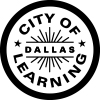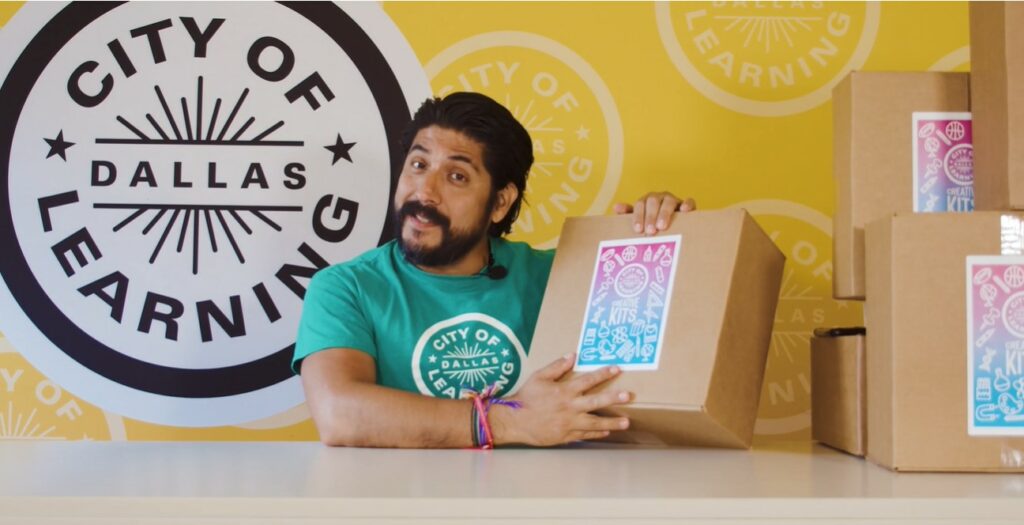SOARing through Summer
Although SOARS Camp participants couldn’t get together in person this summer, they still stretched their brains and imaginations.
Designed for youth ages 6 to 12 in the Pleasant Grove, Redbird and West Dallas neighborhoods, the free program shifted to an online-only format this year. And so, every Monday and Wednesday between June 15 and August 7, campers hopped onto Zoom calls twice a week for an exciting slate of activities.
Before those calls, campers picked up “Creative Kits” in their neighborhoods. Designed around topics like arts, culture and STEM, the kits contained self-guided activities for the young people to do. Then, on each Zoom call, campers and their instructors would dive deeper into what was included in the kits and collaborate on projects together. One Wednesday, that meant showing off the terrariums they had made.
While they covered different topics, each SOARS Creative Kit was intended to engage participants and spark their creativity—and they were a hit. Two campers, Omar and James, even described them as their favorite part of the program.
Siblings and first-time SOARS attendees Yohan and Zaya also enjoyed the camp, with Zaya, a fourth-grader, giving it a thumbs-up.
And when participants were asked to raise their hands if they wanted to see a friend take the camp with them, all arms on-screen popped up. Even a dog barked their stamp of approval in the background.
The message was clear: SOARS Camp may have had a new look this summer, but it was still a success.
But pulling off virtual programming isn’t always easy. Here are five tips that helped the Dallas City of Learning/Big Thought Learning Partner engage their campers and create an optimal environment for learning.
- Set the tone. After warmly welcoming participants, don’t forget to remind them about the rules of engagement for the event. For example, mute your mic when you’re not speaking, and raise your hand when you’d like to say something. You can also encourage learners to set up their computers in a quiet place and to avoid moving things around near the phone or computer used for audio.
- Make a plan. Before diving right into the programming, share an agenda with learners so they know what will be covered and how long each block of time will be. This sets expectations, removes uncertainties and gives participants an idea of what’s to come.
- Get moving! Sitting down for a computer-related activity may not be the most active experience, but you can incorporate movement in a few easy ways. Start off by encouraging participants to stretch together, or add in a stretch break around the event’s midway point. This is also a great opportunity to remind learners to be active every day.
- Encourage participation. After an activity, ask learners to share their work on-screen. Not only will they be proud to show off their creativity, but hosts can also use this moment to thank them for making a meaningful contribution to the program. By calling out participants individually, you can keep them engaged and help them feel seen and heard.
- Limit disruptions. Hosts and organizers have the power to mute participants on Zoom—and they shouldn’t be afraid to use it. Children often don’t understand that their noise level can be disruptive to others. By stepping in, hosts can ensure all attendees have a pleasant experience.
Learn more about SOARS camp and other Dallas City of Learning partners and programs.


